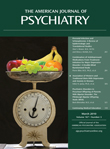Does the DSM-IV Clinical Significance Criterion for Major Depression Reduce False Positives? Evidence From the National Comorbidity Survey Replication
Abstract
Objective
To reduce false positive diagnoses, DSM-IV added a clinical significance criterion to many diagnostic criteria sets requiring that symptoms cause significant distress or impairment. The DSM-V Task Force is considering whether clinical significance should remain a diagnostic threshold or become a separate dimension, as it is in ICD. Yet, the criterion's effectiveness in validly reducing the prevalence of specific disorders remains unclear. Critics have argued that for some categories, notably major depression, the criterion is redundant with symptoms, which are inherently distressing or impairing. The authors empirically evaluated the criterion's effect on the prevalence of major depression in the community. This report also considers more broadly the relationship of symptoms to impairment in diagnosis.
Method
Subjects were respondents, aged 18 to 54 years, who participated in the National Comorbidity Survey Replication (N=6,707). The effect of the clinical significance criterion's distress and impairment components on major depression was assessed in this sample. Distress questions were administered to all respondents reporting persistent sadness (≥2 weeks) or the equivalent. Questions pertaining to role impairment were asked of all respondents satisfying major depression symptom-duration criteria.
Results
Of 2,071 individuals reporting persistent sadness or the equivalent, 97.2% (N=2,016) satisfied criteria for distress. Of 1,542 individuals satisfying depression symptom-duration criteria, 96.2% (N=1,487) satisfied criteria for impairment.
Conclusions
These findings support the redundancy thesis. Distress is virtually redundant with symptoms of persistent sadness, even in the absence of major depression, and impairment is almost always entailed by major depression-level symptoms. Thus, the clinical significance criterion does not substantially reduce the prevalence of major depression in the community. The DSM-V Task Force should consider eliminating the criterion and explore alternative ways to identify false positives in the diagnosis of depression. The criterion's status for other disorders should be evaluated on a disorder-by-disorder basis because the diagnostic relationship between symptoms and impairment varies across categories.



